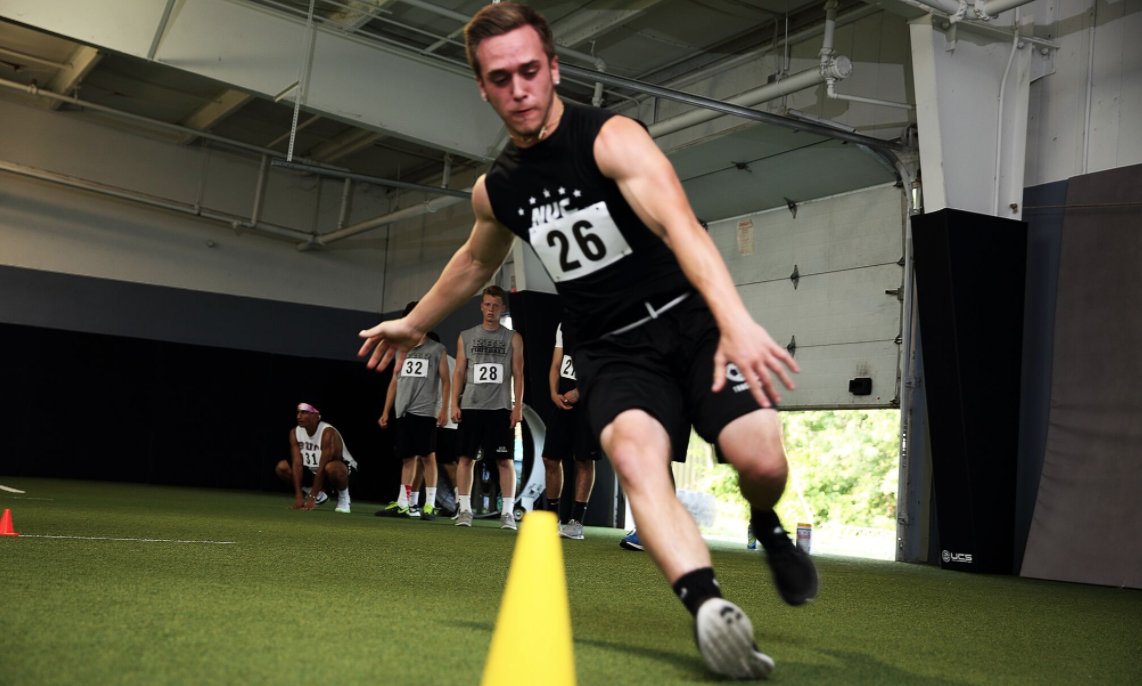Soccer Speed – How Fast Can You Stop?
By: Jeremy Boone

Speed is arguably the most desired quality in soccer. In fact, many coaches determine team roster positions just on this quality alone. While speed does contribute to winning a game, the concept of speed is often lopsided. Just what exactly do I mean?
Field and court based speed development programs usually focus on a player’s ability to start, in other words produce force. This is then supported in the weight room for strength development with practically all of the exercises focusing on this same quality of force production. And yet, we can take it a step further by listing the most commonly used field tests for soccer to include vertical jump, standing broad jump, hop on one leg for distance, etc. Again, all tests of force production. But isn’t there another quality that is painfully missing here?

The #1 Rule for Soccer Specific Speed The most important principle of speed development for soccer is being mindful that it does not matter how fast a player can start if he can not stop. Take a moment and evaluate your present training program and list all of the components and drills that focus on force absorption, a player’s ability to stop. What is the percentage of force production versus force absorption based drills?
Last week I had the opportunity to test a Division III Women's Soccer Team using the Hop & Stop Test.
For those of you who are not familiar with this test it is the first field test I have found that quantifies an athlete's lower body ability to:
Produce Force (Hop) -player takes off and lands on the same leg for maximum distance with no specific landing protocol
Absorb Force (Leap)– player takes off of one leg and lands on the other for maximum distance and must come to a complete stop under one second upon ground contact.
Asymmetries– evaluates the performance difference between each leg for both tasks
The test is specific to the athlete as the scores are relative to the individual's height. Also, an asymmetry score of 0-5% is ideal and a score between 6-10% is acceptable. Any symmetry score greater than 10 is considered a red zone and that athlete is at much greater risk for injury in a non-contact situation.
Below is an example taken from a recent evaluation with a women’s Division I Soccer Team.
Div. III Women’s Soccer Team Hop & Stop
18 female college soccer players were tested
Hop Test (Force Production)
No statistical difference b/t right and left legs However, there was a percentage difference (L=78% R=73%) Team Avg= 76% so this is what the minimum should be for passing the screen for force production for this team 8 out of 18 players were in double digits for asymmetry
Leap Test (Force Absorption)
Extremely high statistical significance between both legs Onto L= 120% Onto R=107% 14 out of 18 players were in double digits and 3 of the 14 were above a score of 20 asymmetrically
Summary of Data These team results show the importance of addressing force absorption in a training and injury prevention program. There are a handful of players that are at great risk of suffering a non-contact lower extremity injury due to lack of symmetry in both force production and force absorption. In addition, the majority of the team cannot effectively absorb force (stop) on their right leg which will contribute to their inability to change direction.
Training Suggestions Incorporate balance drills into the warm-up Plyometric preparation drills with an emphasis on landing under one second as a transition exercise leading into practice
Fall & Stop Drop Squat Bench Blasts Bodyweight Jump Squats
Perform basic force production exercises (lunges, step-ups, split squats) at the end of practice will help improve these test scores during the beginning of this season.
Recommended Athletes' Acceleration Products
About The Author:
Jeremy Boone founded his own sports performance consulting company, the Carolina Athletic Development Institute dedicated to providing athletes with comprehensive training and conditioning programs based upon the athlete’s sport, position, and individual needs. If you wish to contact Jeremy Boone visit his site at: www.athletebydesign.com
—————————————————————————–




1 Comment for “Soccer Speed – How Fast Can You Stop?”